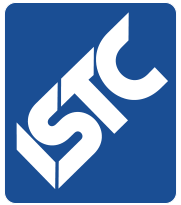
 ISBN-10: 0-9506459-5-8
ISBN-10: 0-9506459-5-8
ISBN-13: 978-0-9506459-5-7
Published: July 2001
Price: £20
To order this title direct from the ISTC, please contact istc@istc.org.uk.
About the book
In recent years the role of the professional writer has changed dramatically and in addition the profession has undergone a period of rapid growth. As a result, there is a need for professional communicators to share their knowledge and skills, and yet very few publications on this subject have been produced in the United Kingdom. This book aims to address this omission by offering papers which present a wide range of viewpoints on current issues in professional writing and information design. The papers in this book have been written by practitioners, managers and academics in the United Kingdom, and the book reflects their individual experience and opinions.
For many years there has been a debate about whether online documents will replace paper documents, and whether the paperless office is a viable reality. The book presents two different perspectives on this question. The issue is discussed by Dave Griffiths in the first chapter, which concludes that there will be an ongoing need for paper in some circumstances. Pete Greenfield, on the other hand, gives us an account of a paperless document distribution system currently in operation, describing the process by which the internal communications of the Abbey National Building Society became fully paperless, with the Society’s communications being transmitted and updated by satellite.
These two papers show the importance of the audience and purpose of the documents in question. Kate Cooper likewise focuses on the needs of her audience when she addresses the problem of how to design an open learning course. This chapter also introduces some considerations more usually associated with hypertext, since the open learning course, although delivered on paper, had to be capable of being used in a non-linear fashion.
Nowadays the professional communicator may be writing in English for audiences of different cultures. Sandra Harrison asks how and to what extent we can adapt our writing to take account of readers from other cultures. This chapter looks at the strategies we can use when writing for different cultures, and includes references to a range of other resources.
Various stages within the writing process are discussed throughout the book. There is practical advice from Colin Battson on determining the audience and on creating a house style, from John Kirkman on writing style, from Ron Brown and Kathy Lawrence on editing, from Peter Lightfoot on illustration, from Richard Raper on indexing, and from Roy Handley on writing a synopsis. Increasingly, professional writers need to take control of the whole writing process from planning to delivery, and this challenge is addressed by Paul Warren in his chapter on managing documentation projects.
Newer forms of writing are also examined: Clyde Hatter explains how to develop a web site, Matthew Ellison discusses help systems design, and Bryan Little de-mystifies the subject of PDF files.
The appendices contain useful information about British Standards and proof-reading marks. The second appendix directs readers to the ISTC web site, which in turn opens up another exciting range of resources for professional and technical communicators.
About the authors
There is a need for professional communicators to share their knowledge and skills, but very few publications on this subject have been produced in the United Kingdom. The papers in this book have been written by practitioners, managers and academics in the United Kingdom, and reflect their individual experience and opinions.
